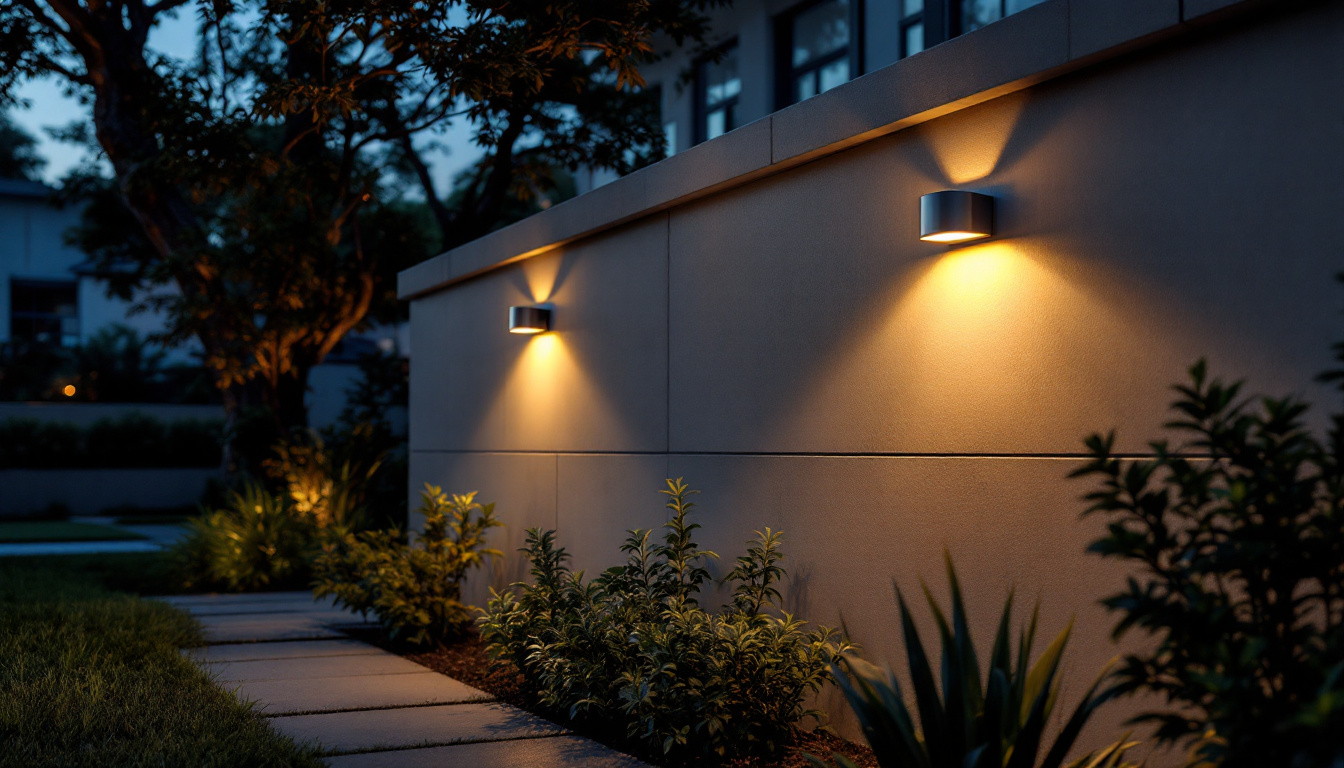
As the lighting industry continues to evolve, understanding the differences between various types of fluorescent tubes is essential for lighting contractors. Among the most commonly used fluorescent tubes are T8 and T12. This guide aims to clarify the distinctions between these two types, helping contractors make informed decisions for their projects.
Fluorescent tubes are categorized by their diameter, which is measured in eighths of an inch. The “T” in T8 and T12 stands for “tubular,” with the number indicating the diameter. Therefore, T8 tubes have a diameter of 1 inch (8 eighths), while T12 tubes have a diameter of 1.5 inches (12 eighths). This seemingly simple difference has significant implications for performance, efficiency, and application.
The physical size of T8 and T12 tubes plays a crucial role in their installation and application. T8 tubes, being slimmer, are often lighter and easier to handle. This can be particularly advantageous in installations where space is limited. In contrast, T12 tubes, with their larger diameter, may require more robust fixtures and can be more cumbersome to work with.
Additionally, the end caps of these tubes differ. T8 tubes typically use a bi-pin base, while T12 tubes may use a larger bi-pin or a different type of base altogether. This difference can affect compatibility with existing fixtures, making it essential for contractors to assess the requirements of their projects before selecting a tube type. Furthermore, the installation process can vary significantly; T8 fixtures are often designed for quick and easy replacement, which can save valuable time during maintenance or upgrades.
One of the most significant differences between T8 and T12 tubes is their energy efficiency. T8 tubes are generally more energy-efficient than T12 tubes, producing more lumens per watt. This increased efficiency translates to lower energy costs for end-users, making T8 a more attractive option for commercial and industrial applications.
Moreover, T8 tubes often utilize electronic ballasts, which further enhance their energy efficiency. In contrast, T12 tubes traditionally operate with magnetic ballasts, which are less efficient and can result in higher energy consumption. As energy costs continue to rise, the preference for T8 over T12 is likely to grow among contractors and clients alike. Additionally, many businesses are now prioritizing sustainability, and the reduced energy consumption of T8 tubes aligns well with eco-friendly initiatives. This shift not only helps in reducing operational costs but also contributes to a lower carbon footprint, making T8 tubes a more responsible choice for environmentally conscious organizations.
When evaluating T8 and T12 tubes, performance is a critical factor that contractors must consider. This includes aspects such as light output, color rendering, and lifespan.
In terms of light output, T8 tubes generally provide a higher lumen output compared to T12 tubes. This means that T8 tubes can illuminate larger areas more effectively, making them suitable for spaces requiring bright, consistent lighting. For instance, in commercial settings like warehouses or retail spaces, the need for adequate illumination is paramount, and T8 tubes often meet this demand more efficiently.
Furthermore, the lumen depreciation rate is typically lower for T8 tubes, meaning they maintain their brightness over a longer period compared to T12 tubes. This longevity can be a selling point for contractors looking to provide long-lasting solutions for their clients. In addition to their higher lumen output, T8 tubes also offer improved energy efficiency, which can lead to significant cost savings on electricity bills. This is particularly beneficial for businesses operating on tight budgets, as the initial investment in T8 tubes can be recouped through lower energy costs over time.
Color rendering is another important performance metric. T8 tubes are available in a variety of color temperatures, allowing for greater flexibility in creating the desired ambiance in a space. They can produce warm, neutral, or cool light, catering to different aesthetic preferences and functional requirements.
On the other hand, T12 tubes may not offer the same range of color temperatures, which can limit their application in settings where specific lighting effects are desired. For contractors, understanding the color rendering capabilities of both types of tubes can aid in making the best choice for their clients’ needs. Moreover, T8 tubes often boast a higher Color Rendering Index (CRI), which means they can render colors more accurately and vividly. This can be particularly important in environments such as art galleries or retail stores, where the true representation of colors can influence consumer behavior and enhance the overall shopping experience.
The lifespan of T8 tubes is generally longer than that of T12 tubes. T8 tubes can last up to 30,000 hours or more, while T12 tubes may only last around 20,000 hours on average. This extended lifespan means that T8 tubes require less frequent replacement, reducing maintenance costs for clients and increasing satisfaction.
Additionally, the reduced frequency of replacements can also lead to less waste, aligning with sustainability goals that many businesses are striving to achieve. Contractors who emphasize the longevity of T8 tubes can position themselves as environmentally conscious and forward-thinking. Furthermore, the ease of installation and compatibility of T8 tubes with existing fixtures can further streamline the upgrade process, minimizing downtime for businesses. This not only enhances operational efficiency but also reinforces the contractor’s reputation for providing practical and effective lighting solutions that meet the evolving demands of modern workplaces.
When selecting between T8 and T12 tubes, cost is often a significant factor for contractors and their clients. The initial purchase price, installation costs, and long-term savings all contribute to the overall financial picture.
Typically, T12 tubes are less expensive upfront than T8 tubes. However, this lower initial cost can be misleading. While T12 tubes may seem like a more budget-friendly option initially, the long-term costs associated with energy consumption and replacement can outweigh these savings.
Contractors should consider the total cost of ownership when advising clients. While T8 tubes may have a higher upfront cost, their energy efficiency and longer lifespan can lead to significant savings over time, making them a more economical choice in the long run.
For contractors, presenting a clear return on investment (ROI) analysis can be a powerful selling point. By calculating the potential energy savings and reduced maintenance costs associated with T8 tubes, contractors can demonstrate the value of investing in more efficient lighting solutions.
Additionally, many clients are increasingly focused on sustainability and energy efficiency. By choosing T8 tubes, contractors can align their offerings with these values, enhancing their appeal to environmentally conscious clients.
Understanding the applications and suitability of T8 and T12 tubes is crucial for contractors. Each type has its strengths and weaknesses, making them more suitable for specific environments.
T8 tubes are often the preferred choice for commercial and industrial settings due to their higher efficiency and better light output. Warehouses, manufacturing facilities, and retail spaces benefit from the bright, consistent lighting that T8 tubes provide.
In contrast, T12 tubes may still be found in older installations or in areas where lighting requirements are less demanding. However, as energy efficiency becomes a more pressing concern, many facilities are transitioning away from T12 to T8 or even LED alternatives.
In residential applications, T8 tubes can also be advantageous, particularly in garages, basements, or utility rooms where bright lighting is needed. Their versatility in color temperature allows homeowners to choose a lighting solution that fits their preferences.
While T12 tubes may still be used in some older homes, the trend is moving towards more efficient options. Contractors should be prepared to recommend T8 or LED solutions to homeowners looking to upgrade their lighting systems.
The lighting industry is constantly evolving, and understanding future trends can help contractors stay ahead of the curve. While T8 and T12 tubes have been staples in fluorescent lighting, the rise of LED technology is reshaping the landscape.
LED lighting has gained significant traction in recent years due to its superior energy efficiency, longevity, and decreasing costs. Many contractors are now recommending LED solutions as a replacement for both T8 and T12 tubes. LEDs not only offer lower energy consumption but also provide instant illumination without the warm-up time associated with fluorescent tubes.
As more clients seek sustainable and cost-effective lighting solutions, the shift towards LED is expected to accelerate. Contractors who embrace this trend and educate themselves about LED options will be better positioned to meet client demands.
Regulatory changes aimed at improving energy efficiency are also influencing the lighting industry. Many regions are implementing stricter energy codes and offering incentives for upgrading to more efficient lighting solutions. Contractors should stay informed about these regulations and incentives, as they can provide valuable opportunities for clients to save on energy costs and improve their lighting systems.
By understanding the implications of these changes, contractors can position themselves as knowledgeable advisors, helping clients navigate the complexities of lighting upgrades.
In summary, understanding the differences between T8 and T12 tubes is essential for lighting contractors. From physical characteristics and energy efficiency to performance and cost considerations, each type has its advantages and disadvantages. As the industry moves towards more efficient lighting solutions, T8 tubes are increasingly becoming the preferred choice for many applications.
Contractors who stay informed about the latest trends and technologies will be better equipped to serve their clients and navigate the evolving landscape of the lighting industry. By prioritizing energy efficiency, performance, and sustainability, contractors can enhance their offerings and contribute to a brighter, more efficient future.
Ready to elevate your lighting projects with the efficiency and performance of T8 tubes? At LumenWholesale, we offer an exceptional range of spec-grade lighting products designed to meet your every need. Say goodbye to inflated markups and hello to unbeatable wholesale prices, quality you can trust, and the convenience of free shipping on bulk orders. Make the smart choice for your next project and experience the best value in lighting solutions. Visit Wholesale Lighting at the Best Value today and join the multitude of contractors who trust LumenWholesale for their lighting needs.

Discover the transformative impact of LED light movement sensors in modern lighting projects.

Discover essential tips for lighting contractors to avoid common pitfalls when installing solar lights on outdoor walls.

Discover how commercial LED light bulbs can revolutionize your lighting projects with energy efficiency, longevity, and cost savings.

Illuminate your expertise with our comprehensive checklist for solar security lighting.